Hollywood & Spine Archive: 'Snakes' with Bite
An overview of the novelization to SNAKES ON A PLANE, originally published in August 2021.
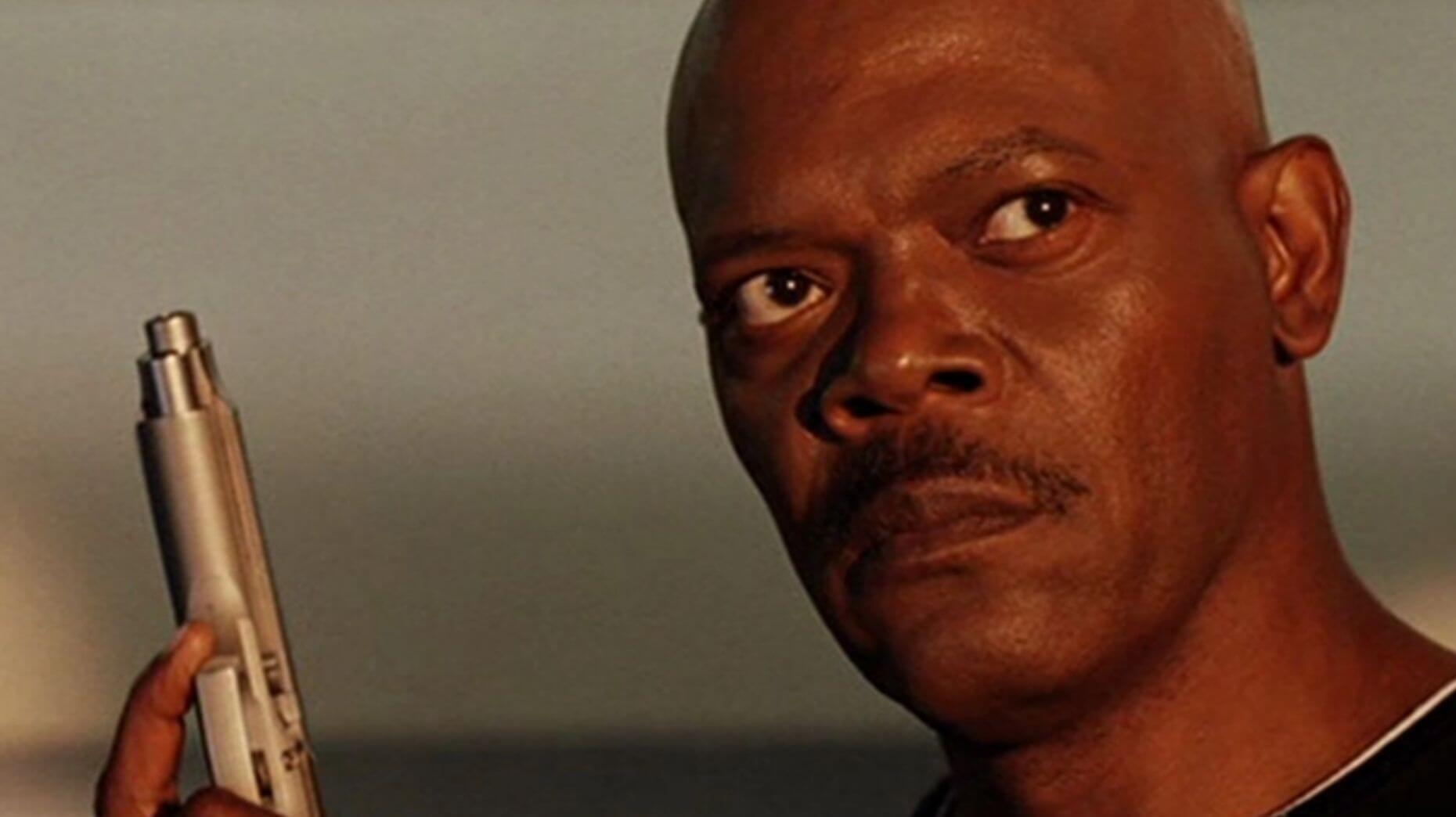
I'm so glad a laughably dumb movie got so much juice in a novelization for me to write so much about. I love this one a lot and humbly submit it as the type of silly, not terribly but fun-to-read cultural reporting I wish you could do regularly for a livable wage. (originally published 8/20/2021)
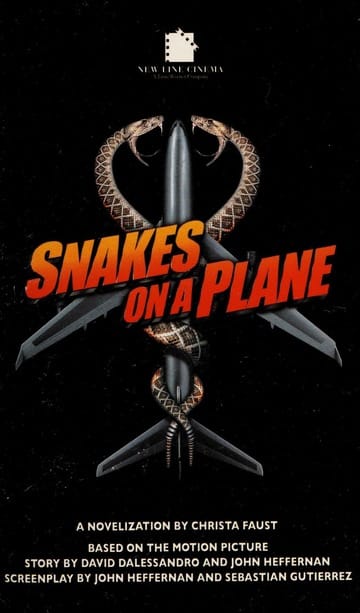
Snakes on a Plane by Christa Faust (story by David Dalessandro and John Heffernan; screenplay by John Heffernan and Sebastian Gutierrez) (Black Flame, 2006)
The pitch: When the FBI is tasked with escorting a trial witness from Hawaii to Los Angeles, the commercial airliner they travel on becomes center stage for a last-ditch hijacking, involving an unlikely murder attempt with some very live cargo.
The author: Christa Faust has a story that would make a book itself, working as a professional dominatrix before writing hardboiled crime fiction as well as tie-in novels. Examples in the latter field include the novelization to Final Destination 3 and stories set in the Nightmare on Elm Street and Twilight Zone universes.
The lowdown: In another world, Snakes on a Plane would have ushered in a different era of over-the-top pop cinema. Charismatic superstar Samuel L. Jackson took the lead in the film based on the title alone - pushing back against the studio's wish to change it - and when a screenwriter shared his experience of almost working on a rewrite, the early, MySpace-fueled but pre-Facebook/Twitter Internet slowly started to go berserk.
Seizing on an opportunity to go early Web 2.0 viral, New Line Cinema commissioned reshoots, pushing the flick from PG-13 to R thanks to a bunch of over-the-top gore and an expletive-heavy line only Jackson could deliver with such panache. Memes were commissioned, as was a <a href="">dance-punk end title theme that is unfortunately bad. And the result of all this labor? A box office failure, barely recouping its budget in domestic returns and turning a mild profit internationally.
Fifteen years after its release - a milestone that came and went without a single retrospective - I wish Snakes on a Plane had done better; it could have kept the multiplex a little more fertile for wacky high-concept blockbusters that aren't based on existing movies or comic books. (The online mania burrowed deep into my head and abruptly shut off on opening weekend, I hyped my friends into seeing it in a theater but backed out at the last minute to watch Animaniacs and eat ice cream with my then-girlfriend, recovering from the removal of her wisdom teeth.) But I also wish Snakes on a Plane was better. On a recent viewing, I was struck by the facile editing - the seams between original footage and in-yer-face reshoots are easily visible - and a general lack of conviction throughout the mostly disposable cast. (Other than Jackson, of course, due credit to future Good Wife Julianna Marguiles, David Koechner and the always-funny Kenan Thompson for their efforts.)
What an unbelievable delight, then, to read Faust's take on Snakes. Her pulpy bona fides improve the story in almost every way, fleshing out characters and sequences in a surprisingly brisk 400 pages, while still staying true to the campy spirit of the source material. She almost turns it into a grindhouse picture in places - arguably worthier of its cult status on the page than on screen.
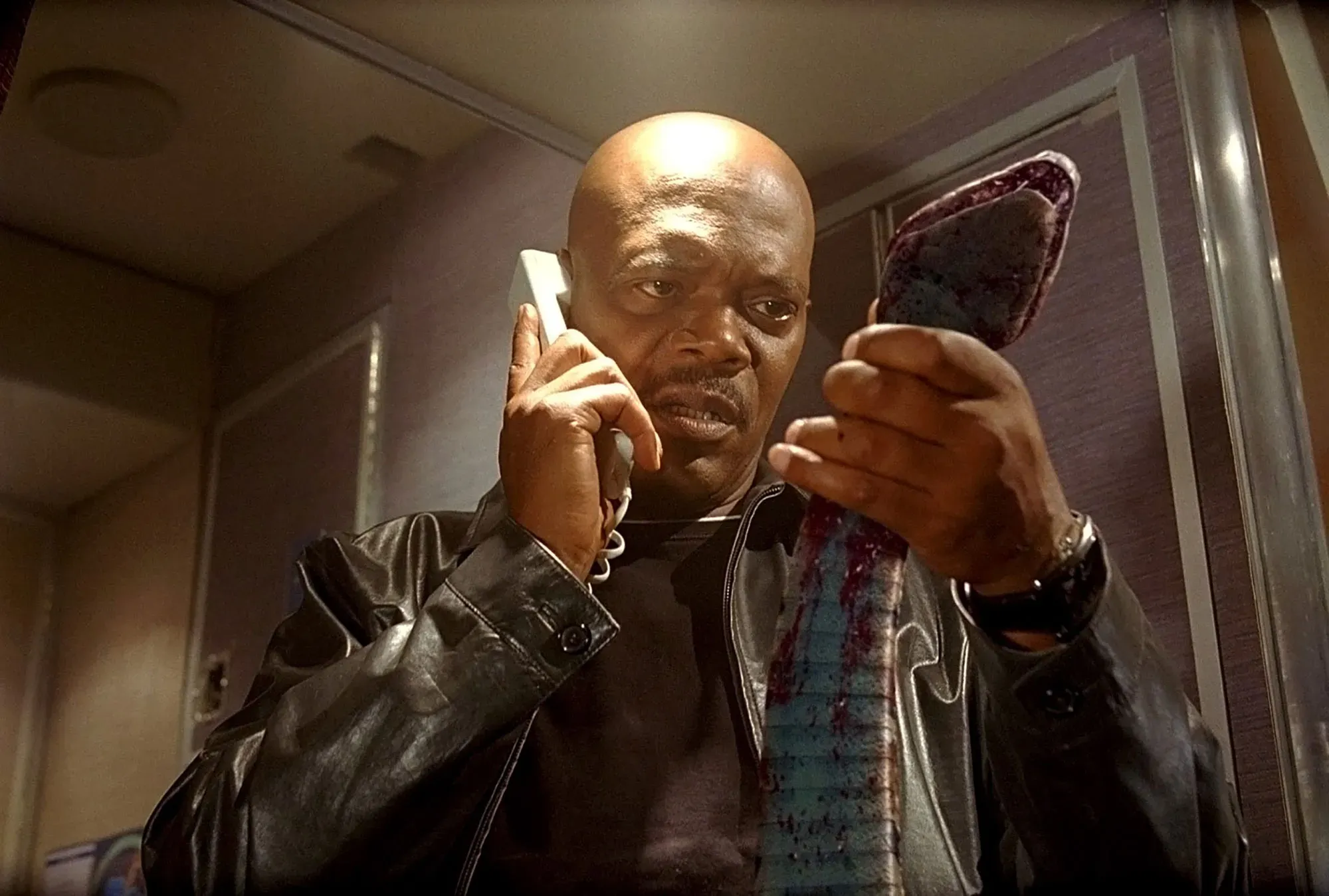
"I've dabbled in various genres, but the one that really feels like home for me is crime fiction," Faust told Hollywood & Spine in an e-mail interview. "Not so much the whodunnit style puzzle box mysteries but what I like to call the why-dunnit. Stories that focus not the crime itself, but more on the characters involved and the ways in which they come apart under pressure. As you can probably tell by reading Snakes, character has always been my favorite aspect of storytelling."
Indeed, Faust adjusts, adds and deepens characters in surprising ways. Sean, the surfer dude whose agreement to become a state witness drives the over-the-top plot, is a solid POV character: not a twentysomething as in the film, but a literal teen, son of an absent surfer and a deceased mother. The heaviness of his life before witnessing a murder - and the sense of responsibility he feels through the story - is palpable. Same goes for the myriad of passengers, some in the film and some not, who are unfortunate victims of snake bites. A bunch of book-exclusive characters include a moody teen, a single expectant mother, and a jewel thief getting away with murder; their visceral, violent demises impact harder than most of the movie's cheap shocks.
"I like to joke that writing novelizations is a lot like working in the Cheez Doodle factory," Faust said. "You're given a scant teaspoon of orange dust and salt and artificial cheese flavor and you have to puff enough air into it to make it into a satisfying snack...Since character development is my jam, I used backstories and character sketches to fill those pages."
The unexpected weirdness of those deviations constantly delights. A one-dimensional, presumably gay male flight attendant in the film was one of Faust's more inspired transformations, making him openly but subtly bisexual. "It's so rare that you get to see bisexual men just living their lives and not having their sexual orientation be a big deal," said the author, a bisexual woman herself. "I wanted to make him a real three dimensional person, not a joke. I also wanted to show younger readers that you can be an effeminate man and still kick ass and save lives and be a hero." It's also clear from the book that Faust knows her snakes, adding colorful scientific details that recall the best technospeak of Jurassic Park. "There is another branch of the multiverse in which I'm a herpetologist instead of a writer," said Faust, who's owned reptiles in the past.
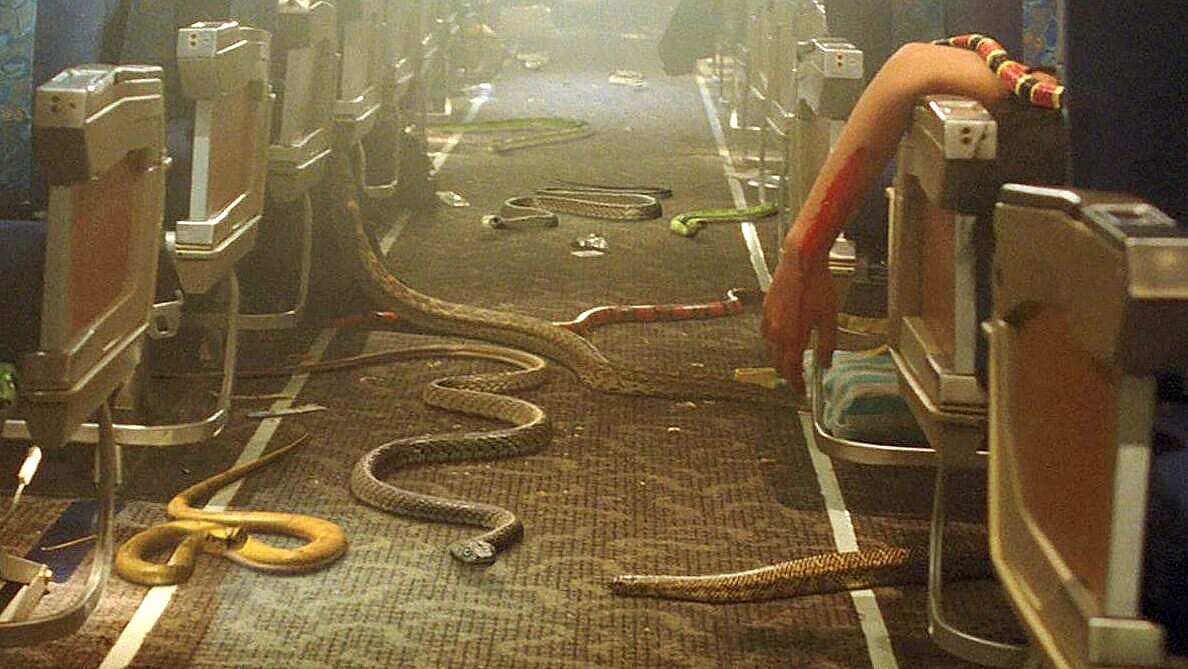
Faust said she got the book done in a six-week turnaround - a swiftness that almost defies the detail - but vividly recalls the book's biggest block: securing the updated script to make sure the extra juiciest bits were represented in her work. "Oh man, that was a fucking epic and a half," she said. "The version of the script that I was working off was called Pacific Air Flight 121 and the Sam Jackson character was white. I knew about the casting while I was writing, so I was able to make adjustments there, but the 'motherfucking' line was not in my script and when it leaked it went viral."
What made it toughest, she reveals, was geography and bureaucracy. "My publisher for this project was located in England," she explained. "New Line is in L.A., and so am I. So when we needed to get an updated shooting script to make sure the viral line was included, there was a whole lot of worry about leaks and security because of all the excitement and hype. Long story short, New Line insisted on snail mailing the script TO THE U.K. so that they could turn around and mail it back to me. In L.A.
"Punchline: I already knew the line, like everyone did," she continued, "and it turned out there weren't really any other major changes that needed to be incorporated. So we went through all that rigamarole for nothing." Novelization writing really can be a motherfucker.
The cutting room floor: The 12 minutes of deleted scenes on the Snakes DVD are mostly brief character moments that Faust adds text and subtext to. Even better, she offers whole-cloth sequences that could've benefited from being included in the film in the first place. Notable inclusions are more interstitial scenes with the bad guy, Eddie Kim (including a squirmy comeuppance after his snake plot is foiled); more time with Bobby Canavale's FBI agent on the ground and a know-it-all snake expert (who gets a strangely affecting, romantic backstory); and even an extended heist-like sequence in which Sean is smuggled onto the plane and Kim's underlings figure out which flight should get the slithering surprise. (One of the movie's hollowest payoffs is properly set up here: before boarding, Jackson's agent Flynn equips Sean with a bulletproof vest, which saves him from one last scaly jump scare at the film's end.
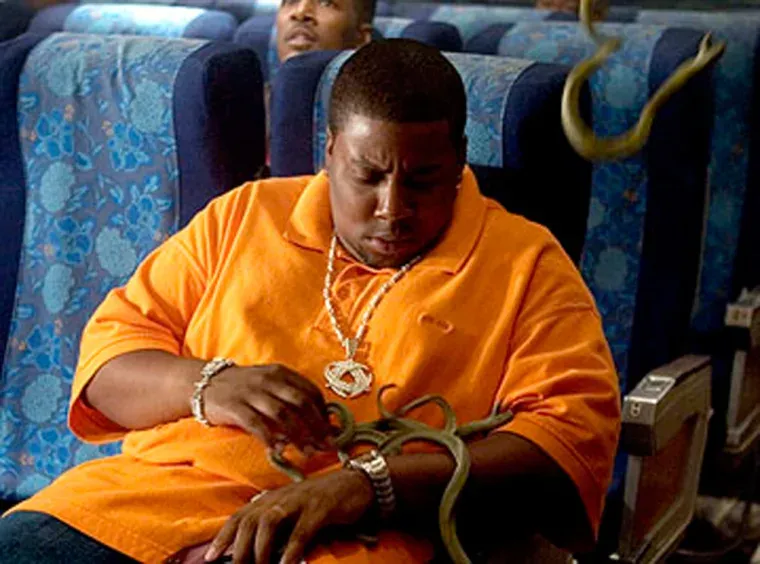
As for the passengers, there's another great extra one we don't see in the movie: an eccentric self-proclaimed psychic whose visions of snake-assisted murder cause her to frantically disembark before takeoff. The newlywed couple that becomes snake food about halfway through the film have slightly different fates in the book as well: he's taken out by a bite almost immediately during the attack, and she's the book's last casualty, gruesomely taken out by some debris after Flynn depressurizes the cabin to eject the snakes.
The last word: The Snakes on a Plane novelization won a Scribe Award from the International Association of Media Tie-In Writers - and it's not hard to see why. Her keen understanding that novelizations can be more than the sum of their script has led to one of Hollywood & Spine's most interesting reads yet. "Bottom line, I had a lot of fun with it," Faust said. We think you might, too.
Here is the unedited interview with Christa Faust that formed the backbone of this installment of Hollywood & Spine. It was originally a subscriber exclusive that ran the same week the above essay was published.

Thanks to everyone who read our slithery little look back at the novelization to Snakes on a Plane! Author Christa Faust was kind enough to share her recollections for that send via e-mail, and nailed me on an initial misplaced memory that the infamous Samuel L. Jackson line hadn't ended up in her book. That set the tone for some fun answers to some questions about that book and tie-ins in general!
Tell us a little bit about your background as a prose writer. What compelled you to pursue writing as a career? Are there sorts of things you like to write about?
I've always been a storyteller, as long as I can remember. It's not so much that I pursued writing as a career, but more like I somehow lucked into getting paid for something I was doing anyway.
I've dabbled in various genres but the one that really feels like home for me is crime fiction. Not so much the whodunnit style puzzle box mysteries but what I like to call the why-dunnit. Stories that focus not the crime itself, but more on the characters involved and the ways in which they come apart under pressure. As you can probably tell by reading Snakes, character has always been my favorite aspect of storytelling.
In the mid-'00s you published your first tie-in works, based on properties like A Nightmare on Elm Street and The Twilight Zone before adapting Final Destination 3 and Snakes on a Plane. How were the tie-ins different as a writing experience from novelizations?
Tie-ins give you a little more wiggle room to improvise, whereas novelizations are already predetermined. I like to compare tie-in writing to my sessions as a professional Dominatrix, particularly roleplay scenarios. The client will provide you with certain details, say a type of material they would like you to wear or key story elements that need to be incorporated, and within those guidelines you can be creative and bring your own ideas and interests into play.
There's a lot of good background here on snakes. Had you researched the topic before or did you become an expert of sorts for the book?
I love all kinds of reptiles and have kept them as pets in the past, so it wasn't really a that much of a stretch for me to write about them in depth. There is another branch of the multiverse in which I'm a herpetologist instead of a writer.
I actually tried to create a (semi) believable explanation for why the snakes were abnormally aggressive beyond the original script's somewhat flimsy idea of "pheromones" sprayed on orchids. I also wanted the reader to, if not sympathize with the snakes, then at least understand why they are also victims of the real bad guys in the story.
There's a fair amount of scenes in the Snakes book that didn't make the final cut. Were they in the materials you were given? Examples I'm thinking of include additional scenes with the villain Eddie Kim, the set-up of Sean getting a bulletproof vest, and a few passengers that don't appear in the movie. (I loved the psychic who decides not to board after visions of snakes on the titular plane).
Those extra characters and scenes were all created from scratch by me. I like to joke that writing novelizations is a lot like working in the Cheez Doodle factory. You're given a scant teaspoon of orange dust and salt and artificial cheese flavor and you have to puff enough air into it to make it into a satisfying snack.
Scripts are short and novelizations are long. Approximately a hundred airy script pages vs. four hundred solid-block prose pages. In this case, the script was particularly thin and a lot of extra bulk was needed to fill out the required length. Since character development is my jam, I used backstories and character sketches to fill those pages. Other writers may use extended action sequences or complex world building. It's just a matter of personal preference.
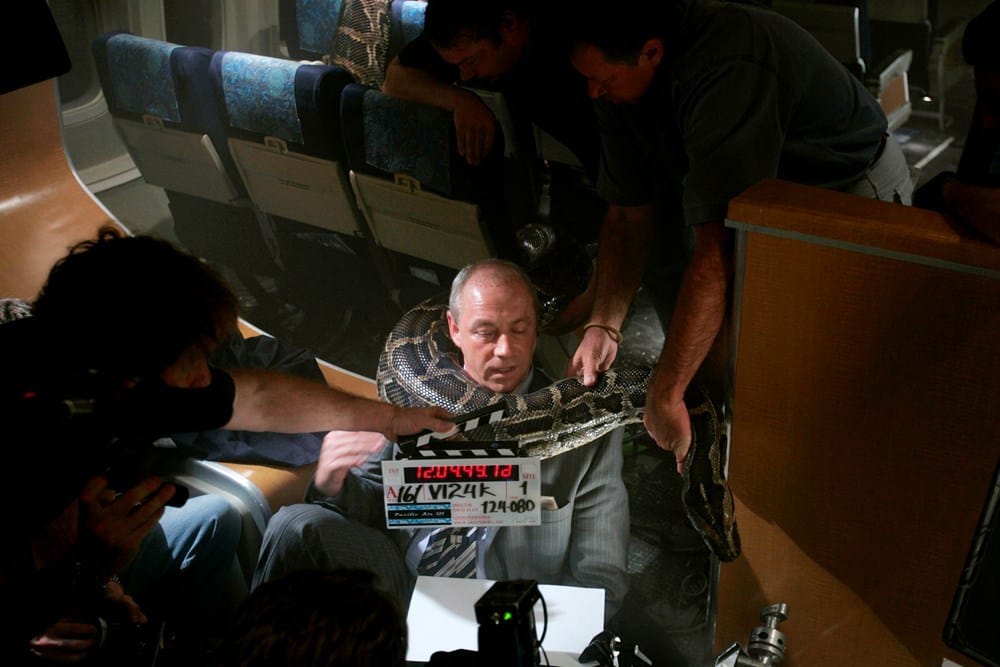
What makes this book really compelling are the detailed backstories you give these characters. It makes the world of the book feel incredibly lived in. How do you develop characters effectively that you yourself did not create?
See above for some of them. For the ones who did exist in the script, they were not very strongly defined for the most part, so they felt like simple templates for me to riff on however I wanted.
A great example was the male flight attendant. That character was embarrassingly lame and offensive in the original script. He basically existed only as the set up for a punchline, the idea that it would be funny if a male character who acted gay turned out to have a girlfriend. As a bisexual person myself, it was a no-brainer for me to make him bisexual. It's so rare that you get to see bisexual men just living their lives and not having their sexual orientation be a big deal. I wanted to make him a real three dimensional person, not a joke. I also wanted to show younger readers that you can be an effeminate man and still kick ass and save lives and be a hero.
One really wild aside in the book that I have to ask about is the two pilots having a spirited debate about the grooming habits of adult entertainers. Where did that come from?
That's just more Cheez Doodle puffing on my part. Just trying to fill space with the kind of banter that makes me laugh. Funny side note, the lovely and bush-tastic Lena Ramon [cited in the book] was my roommate for a hot minute.
The pre-release hype on this movie - which predated the way we talk about films now - resulted in some 11th-hour additions to the movie, including an extremely memorable (and meme-able) line from Samuel L. Jackson. When, how and from whom did you become aware of these additions and what was the process like to make sure they got added into your book?
Oh man, that was a fucking epic and a half. The version of the script that I was working off was called Pacific Air Flight 121 and the Sam Jackson character was white. I knew about the casting while I was writing, so I was able to make adjustments there, but the "motherfucking" line was not in my script and when it leaked it went viral.
The first thing you need to understand about novelization writing is that we writers don't normally have any contact at all with the movie studio. The studio contacts the publisher, and then the publisher hires a writer and works with them on shaping the manuscript to suit the studio's needs. Also, the books need to be written, turned in and approved before shooting even starts to allow for the long production lead time needed to get from manuscript form to finished paperback. For that reason, we don't get to see any film, rough or otherwise, before our work is done.
The second thing you need to know is that my publisher for this project was located in England. New Line is in L.A., and so am I. So when we needed to get an updated shooting script to make sure the viral line was included, there was a whole lot of worry about leaks and security because of all the excitement and hype. Long story short, New Line insisted on snail mailing the script TO THE U.K. so that they could turn around and mail it back to me. In L.A. I mean really, I could have driven over to New Line and picked it up myself in 30 minutes or less (traffic willing.) But no, we had to wait ages and ages for the script to snail its way across the Atlantic and back again.
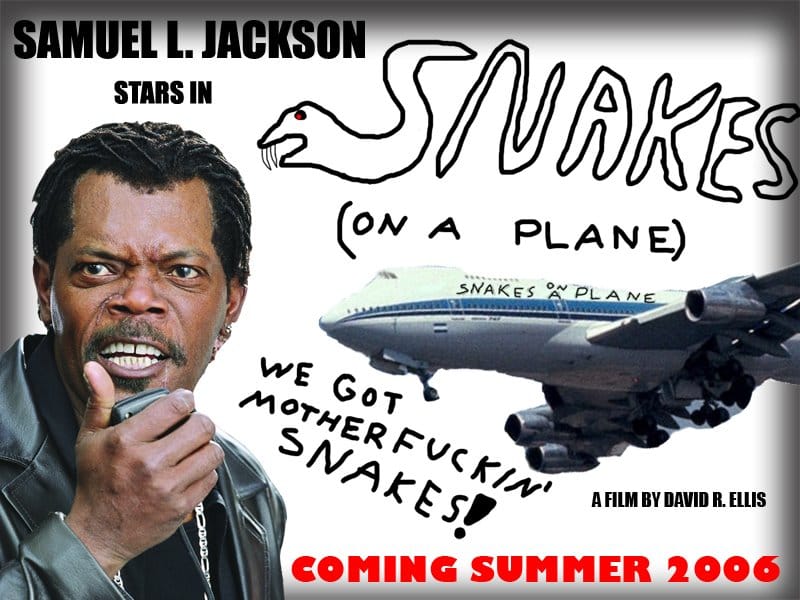
Punchline: I already knew the line, like everyone did, and it turned out there weren't really any other major changes that needed to be incorporated. So we went through all that rigamarole for nothing.
We know deadlines on books like these are tight. Given the generous length and depth of your work, how long did it all take?
The turnaround for these books is six weeks. There's no wiggle room. That's all the time I had, plus maybe an extra week for editing and other updates. There's no time to overthink things. You just bang it out and hope for the best.
The online hype didn't translate to box office success. Did you have any feelings about that at the time? Were you pleased with the reception of your book?
I don't get royalties for this kind of work-for-hire so it doesn't make a whole lot of difference to me if the book sells a ton of copies or not. Also, box office success doesn't always translate to book sales and vice versa. I did win a Scribe award for that book, though, and it was nice to get a hat tip from my fellow tie-in writers. I've also gotten quite a lot of fan mail for it too, so that's nice. Bottom line, I had a lot of fun with it.
Is there anything interesting you're working on now that you'd like to discuss?
I recently finished an AWA comic series called Redemption, with artist Mike Deodato. It's a post-apocalypse Western featuring a queer, aging gunslinger called The Butcher who has to come out of retirement to help her old girlfriend's daughter. Anyway, it has a fun little Easter egg reference to Snakes. At one point, The Butcher is fighting an old nemesis on the back of a crashed plane out in the toxic wasteland and the rusty hull gives out under their boots. The two of them fall through into the cabin, and well, you can imagine what's living down there with all the busted up luggage and mummified corpses.
Anything you'd like to add that we haven't covered above?
Just that anybody who wants to chat about herpetology or pulp novels or dogs or film noir or whatever can find me on social media via Twitter, Instagram or Facebook.
